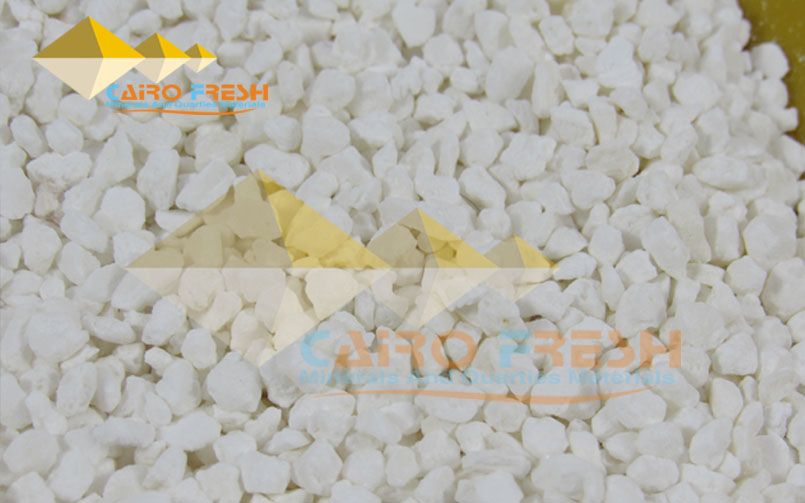Introduction: Sand Unveiled
When you think of sand, a picturesque beach scene or a child’s sandbox may come to mind. However, there’s more to sand than meets the eye. In the world of construction, industry, and manufacturing, the choice of sand can be critical. Silica sand and regular sand may look similar at first glance, but they differ significantly in composition and applications. In this article, we will explore the distinctions between silica sand and regular sand, shedding light on their unique properties and various uses.
Silica Sand Unveiled
Silica sand, also known as industrial sand, is a specific type of sand primarily composed of silicon dioxide (SiO2). It stands out due to its remarkable purity and consistency, making it suitable for a wide range of industrial applications. The high silica content is a defining characteristic of this sand.
High Purity
Silica sand is renowned for its high purity, typically containing over 95% SiO2. This high level of purity is crucial for producing clear and transparent glass products, as impurities can cause discoloration and cloudiness.
Consistency
The consistency of silica sand, both in terms of particle size and chemical composition, ensures uniformity in the manufacturing process. This consistency contributes to the optical clarity and structural integrity of glass products.
High Melting Point
Silica sand exhibits a high melting point, making it suitable for the intense heat required during glass manufacturing. It can withstand temperatures exceeding 1700°C (3092°F) without deforming or deteriorating.
Regular Sand: A Broad Term
“Regular sand” is a term that encompasses a wide variety of naturally occurring sands, each with its unique composition and characteristics. Unlike silica sand, regular sand is not defined by a specific chemical composition but rather by its natural source and regional properties.
Diversity of Sources
Regular sand can be found in rivers, lakes, oceans, and deserts, resulting in a diverse range of mineral compositions. These sources contribute to variations in color, texture, and mineral content.
Impurities and Inconsistencies
Unlike silica sand, regular sand may contain a range of impurities and contaminants, including clay, silt, organic matter, and various minerals. This impurity can affect its suitability for specific applications.
Uses in Construction and Landscaping
Regular sand is commonly used in construction and landscaping for purposes such as mixing with cement to create mortar, leveling surfaces, and providing traction on icy roads. Its availability and affordability make it a practical choice for these applications.
Silica Sand vs. Regular Sand: A Comparative Analysis
Now that we’ve outlined the characteristics of both silica sand and regular sand, let’s compare them in terms of their uses and applications.
Glass Manufacturing
Silica sand is the primary ingredient in glass manufacturing due to its high purity and clarity. It ensures that glass products remain transparent and free from impurities. Regular sand, with its impurities, is unsuitable for this application.
Foundry Casting
In foundry and casting operations, silica sand is preferred for creating molds and cores due to its ability to withstand high temperatures without deformation. Regular sand may not offer the same heat resistance.
Water Filtration
Silica sand is often used in water filtration systems, where its purity and consistency are essential for effectively removing impurities and contaminants from water. Regular sand may not provide the same filtration quality.
Fracking and Oil Extraction
Silica sand is crucial in hydraulic fracturing (fracking) to prop open fractures in rock formations, allowing the extraction of oil and natural gas. Its high purity and durability are vital for this process. Regular sand lacks these essential properties.
Recreation and Landscaping
Regular sand is commonly used for recreational purposes, such as beach volleyball courts and sandboxes. Its affordability and natural variations make it suitable for these applications. Silica sand, while granular, is typically too pure and costly for such uses.
Conclusion: The Sands of Distinction
In conclusion, the world of sand is diverse, with silica sand and regular sand standing out as two distinct entities. Silica sand, prized for its high purity, consistency, and heat resistance, finds its place in precision industries like glass manufacturing and foundry casting. On the other hand, regular sand, with its natural variations and impurities, serves as a versatile material for construction, landscaping, and recreation.
Understanding the distinctions between silica sand and regular sand allows us to appreciate their unique roles in various applications. Whether it’s the crystal clarity of glass or the stability of a foundry mold, these sands each play a vital part in shaping our world in their own distinctive ways.

